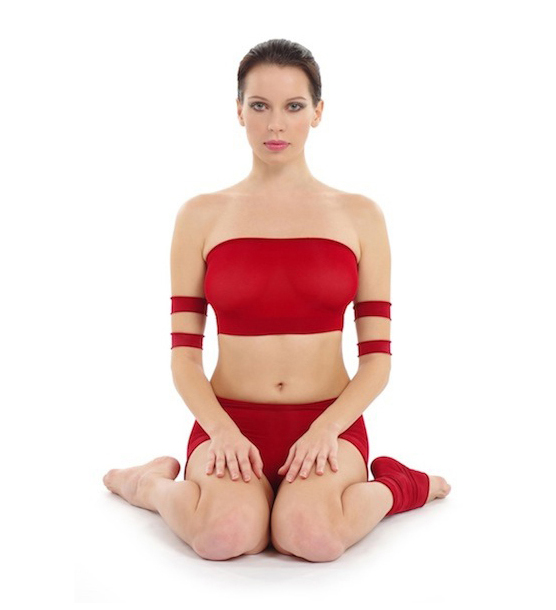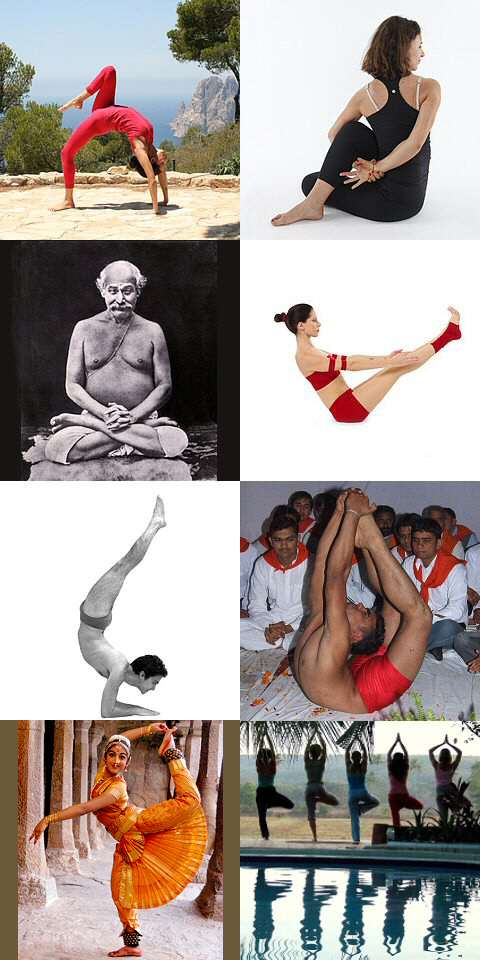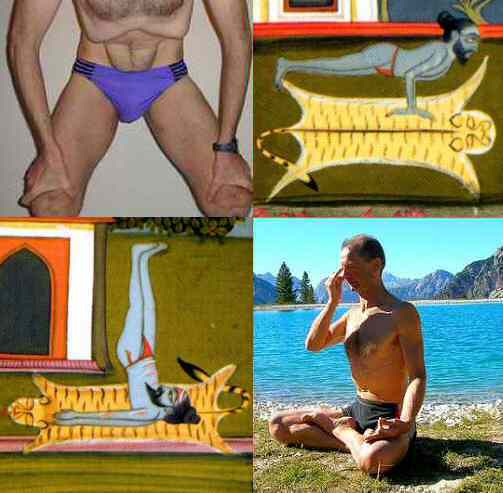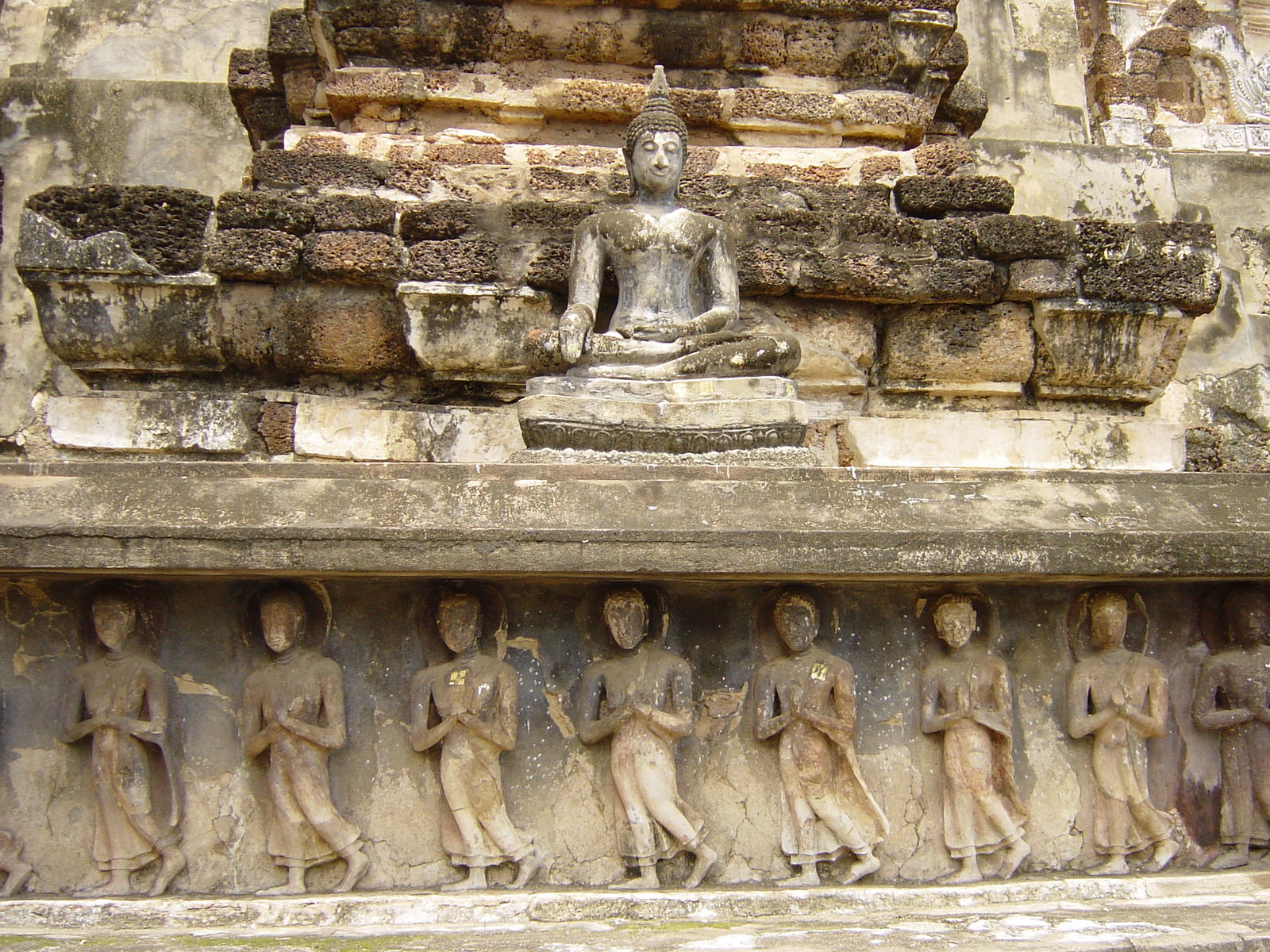|
Virasana
Virasana (; ) or Hero Pose is a kneeling asana in modern yoga as exercise. Medieval hatha yoga texts describe a cross-legged meditation asana under the same name. Supta Virasana is the reclining form of the pose; it provides a stronger stretch. Etymology and origins The name comes from the Sanskrit words meaning "hero", and meaning "posture" or "seat"; () means "reclined". The name virasana is ancient, being found in the 8th century '' Pātañjalayogaśāstravivaraṇa'' (2.46-48) and the 13th century '' Vāsiṣṭha Saṁhitā'' (1.72), but in those texts the description is of a cross-legged meditation seat. The modern kneeling pose is found in 20th century texts such as B.K.S. Iyengar's '' Light on Yoga''; it is mentioned in Ashtanga (vinyasa) yoga texts (e.g. Maehle 2011, who recommends it for lengthening the quadriceps muscle). The yoga scholar Mark Singleton notes that a pose similar to Supta Virasana was described in Niels Bukh's early 20th century Danish text '' ... [...More Info...] [...Related Items...] OR: [Wikipedia] [Google] [Baidu] |
List Of Asanas
An asana (Sanskrit: आसन, IAST: āsana) is a body posture, used in both medieval hatha yoga and modern yoga. The term is derived from the Sanskrit word for 'seat'. While many of the oldest mentioned asanas are indeed seated postures for meditation, asanas may be standing, seated, arm-balances, twists, inversions, forward bends, backbends, or reclining in prone or supine positions. The asanas have been given a variety of English names by competing schools of yoga. The traditional number of asanas is the symbolic 84, but different texts identify different selections, sometimes listing their names without describing them. Some names have been given to different asanas over the centuries, and some asanas have been known by a variety of names, making tracing and the assignment of dates difficult. For example, the name Muktasana is now given to a variant of Siddhasana with one foot in front of the other, but has also been used for Siddhasana and other cross-legged meditation ... [...More Info...] [...Related Items...] OR: [Wikipedia] [Google] [Baidu] |
Sitting Asanas
An āsana (Sanskrit: आसन) is a body posture, originally and still a general term for a sitting meditation pose,Verse 46, chapter II, "Patanjali Yoga sutras" by Swami Prabhavananda, published by the Sri Ramakrishna Math p. 111 and later extended in hatha yoga and modern yoga as exercise, to any type of position, adding reclining, standing, inverted, twisting, and balancing poses. The ''Yoga Sutras of Patanjali'' define "asana" as " position thatis steady and comfortable". Patanjali mentions the ability to sit for extended periods as one of the eight limbs of his system.Patanjali ''Yoga sutras'', Book II:29, 46 Asanas are also called yoga poses or yoga postures in English. The 10th or 11th century '' Goraksha Sataka'' and the 15th century ''Hatha Yoga Pradipika'' identify 84 asanas; the 17th century '' Hatha Ratnavali'' provides a different list of 84 asanas, describing some of them. In the 20th century, Indian nationalism favoured physical culture in response to colon ... [...More Info...] [...Related Items...] OR: [Wikipedia] [Google] [Baidu] |
Vajrasana (yoga)
Vajrasana (), Thunderbolt Pose, or Diamond Pose, is a kneeling asana in hatha yoga and modern yoga as exercise. Ancient texts describe a variety of poses under this name. Etymology and origins The name comes from the Sanskrit words ''vajra'', a weapon whose name means "thunderbolt" or "diamond", and ''asana'' (, āsana) meaning "posture" or "seat". The name Vajrasana denotes a medieval meditation seat, but its usage varied. The 15th century ''Hatha Yoga Pradipika'' called it a synonym of Siddhasana, where one of the heels presses the root of the penis; according to ''Yoga-Mimamsa'' III.2 p. 135, this explains the reference to the vajra weapon. The 17th century ''Gheranda Samhita'' 2.12 describes what '' Light on Yoga'' calls Virasana, with the feet beside the buttocks, while in other texts Vajrasana appears to mean the modern kneeling-down position, with the buttocks resting on the feet. The yoga scholar Norman Sjoman notes that ''Light on Yoga'' is unclear here, as ... [...More Info...] [...Related Items...] OR: [Wikipedia] [Google] [Baidu] |
Hatha Yoga
Hatha yoga (; Sanskrit हठयोग, International Alphabet of Sanskrit Transliteration, IAST: ''haṭhayoga'') is a branch of yoga that uses physical techniques to try to preserve and channel vital force or energy. The Sanskrit word हठ ''haṭha'' literally means "force", alluding to a system of physical techniques. Some hatha yoga style techniques can be traced back at least to the 1st-century CE, in texts such as the Hindu Itihasa, Sanskrit epics and Buddhism's Pali canon. The oldest dated text so far found to describe hatha yoga, the 11th-century ''Amritasiddhi, Amṛtasiddhi'', comes from a Tantra, tantric Buddhist milieu. The oldest texts to use the terminology of ''hatha'' are also Vajrayana Buddhist. Hindu hatha yoga texts appear from the 11th century onward. Some of the early hatha yoga texts (11th-13th c.) describe methods to raise and conserve bindu (vital force, that is, semen, and in women ''rajas –'' menstrual fluid). This was seen as the physical esse ... [...More Info...] [...Related Items...] OR: [Wikipedia] [Google] [Baidu] |
Pātañjalayogaśāstravivaraṇa
The 8th century ''Pātañjalayogaśāstravivaraṇa'' (Sub-commentary on Patanjali's Yoga Commentary), also called the ''Yogasūtrabhāṣyavivaraṇa'' (Sub-commentary on the Commentary on the Yoga Sutras) is Ādi Śaṅkara's commentary on Patanjali's own commentary, the ''bhāṣya'', on his ''Yoga Sutras''. As well as remarking briefly on each sutra, it gives descriptions of the 12 seated asanas named in the ''bhāṣya'', including Dandasana Pashchimottanasana (), Seated Forward Bend, or Intense Dorsal Stretch is a seated forward-bending asana in hatha yoga and modern yoga as exercise. Janusirsasana is a variant with one knee bent out to the side; Upavishthakonasana has the legs stra ..., Svastikasana, and Virasana. The text was rediscovered in the 20th century, published in Madras in 1952, and partly translated into English by Trevor Leggett (Book 1 in 1961, Book 2 in 1983), completed in 1990. The full translation of all four books by T. S. Rukmani was published in 200 ... [...More Info...] [...Related Items...] OR: [Wikipedia] [Google] [Baidu] |
Meditation Seat
Meditative postures or meditation seats are the body positions or asanas, usually sitting but also sometimes standing or reclining, used to facilitate meditation. Best known in the Buddhist and Hindu traditions are the lotus and kneeling positions; other options include sitting on a chair, with the spine upright. Meditation is sometimes practiced while walking, such as kinhin, doing simple repetitive tasks, as in Zen samu, or work which encourages mindfulness. Postures in the ''Yoga Sutras'' The ''Yoga Sutras of Patanjali'' describe yoga as having eight limbs, one being asana, the meditation seat. The sutras do not name any asanas, merely specifying the characteristics of a good asana, stating: The ''Sutras'' are embedded in the ''Bhasya'' commentary, which scholars including Philipp Maas now believe are by the same author; it names 12 seated meditation asanas, possibly all cross-legged, including Padmasana, Virasana, Bhadrasana (now called Baddha Konasana), and Svast ... [...More Info...] [...Related Items...] OR: [Wikipedia] [Google] [Baidu] |
Simhasana
Simhasana (; ) or Lion Pose is an asana in hatha yoga and modern yoga as exercise. Etymology and origins The name comes from the Sanskrit words (), meaning "lion", and (), meaning "posture" or "seat". The pose has also been named Narasimhasana, as in the 19th century '' Joga Pradipika'', from Sanskrit Narasimha, a lion-man avatar of the god Vishnu. The posture is described in the tenth century '' Vimānārcanākalpa''. Description The practitioner kneels with the buttocks on the inner arches of the feet, stretches the arms forwards with the hands outspread just off the ground, and makes a facial expression with the mouth open wide and the tongue out to resemble a lion. The yoga guru B. K. S. Iyengar notes in his 1966 '' Light on Yoga'' that this is the traditional pose; he calls it Simhasana I. Variations Iyengar's Simhasana II begins from lotus position (Padmasana). The practitioner then stands on the knees and moves the body forwards until the front of the body fac ... [...More Info...] [...Related Items...] OR: [Wikipedia] [Google] [Baidu] |
Rodmell Press
Shambhala Publications is an independent publishing company based in Boulder, Colorado. According to the company, it specializes in "books that present creative and conscious ways of transforming the individual, the society, and the planet". Many of its titles deal with Buddhism and related topics in Eastern studies, religion, philosophy, and martial arts. The company's name was inspired by the Sanskrit word Shambhala, referring to a mystical kingdom hidden beyond the snowpeaks of the Himalayas, according to the Tibetan Buddhist tradition. Its authors include Chögyam Trungpa, Pema Chödrön, Thomas Cleary, Ken Wilber, Fritjof Capra, A. H. Almaas, John Daido Loori, John Stevens, Edward Espe Brown and Natalie Goldberg. The company is unaffiliated with Shambhala Buddhism, Shambhala International, or '' Lion's Roar'' (previously entitled ''Shambhala Sun'') magazine. History Shambhala was founded in 1969 by Samuel Bercholz and Michael Fagan, in Berkeley, California. Its books ar ... [...More Info...] [...Related Items...] OR: [Wikipedia] [Google] [Baidu] |
Kneeling Asanas
Kneeling is a basic human position where one or both knees touch the ground. According to Merriam-Webster, kneeling is defined as "to position the body so that one or both knees rest on the floor". Kneeling with only one knee, and not both, is called genuflection. Kneeling is a primate behavior used to convey deference by making the figure that is kneeling appear smaller than the other. Primates themselves establish a dominance hierarchy (or "pecking order") which is important to the survival and behavior of the group. Chimpanzees, for example, have a complex social group that involves a dominant male and a corresponding female, to whom the other males and the juvenile chimps are submissive. Males who threaten the hierarchy are often severely injured or killed; in some instances, the use of submissive behavior is necessary to ensure survival. Religion Humans have inherited the custom of submissive behavior, and kneeling has become prevalent in religious practices. It has been ... [...More Info...] [...Related Items...] OR: [Wikipedia] [Google] [Baidu] |
Buddhist Meditation
Buddhist meditation is the practice of meditation in Buddhism. The closest words for meditation in the classical languages of Buddhism are ''bhavana, bhāvanā'' ("mental development") and ''Dhyāna in Buddhism, jhāna/dhyāna'' (a state of meditative absorption resulting in a calm and luminous mind). Buddhists pursue meditation as part of the path toward Moksha, liberation from defilements (''Kleshas (Buddhism), kleshas'') and clinging and craving (''upādāna''), also called Bodhi, awakening, which results in the attainment of nirvana. The Indian Schools of Buddhism, Buddhist schools relied on numerous meditation techniques to attain meditative absorption, some of which remain influential in certain modern schools of Buddhism. Classic Buddhist meditations include ''anapanasati'' (mindfulness of breathing), ''Patikulamanasikara, asubha bhavana'' ("reflections on repulsiveness");Deleanu, Florin (1992)Mindfulness of Breathing in the Dhyāna Sūtras Transactions of the Internatio ... [...More Info...] [...Related Items...] OR: [Wikipedia] [Google] [Baidu] |








